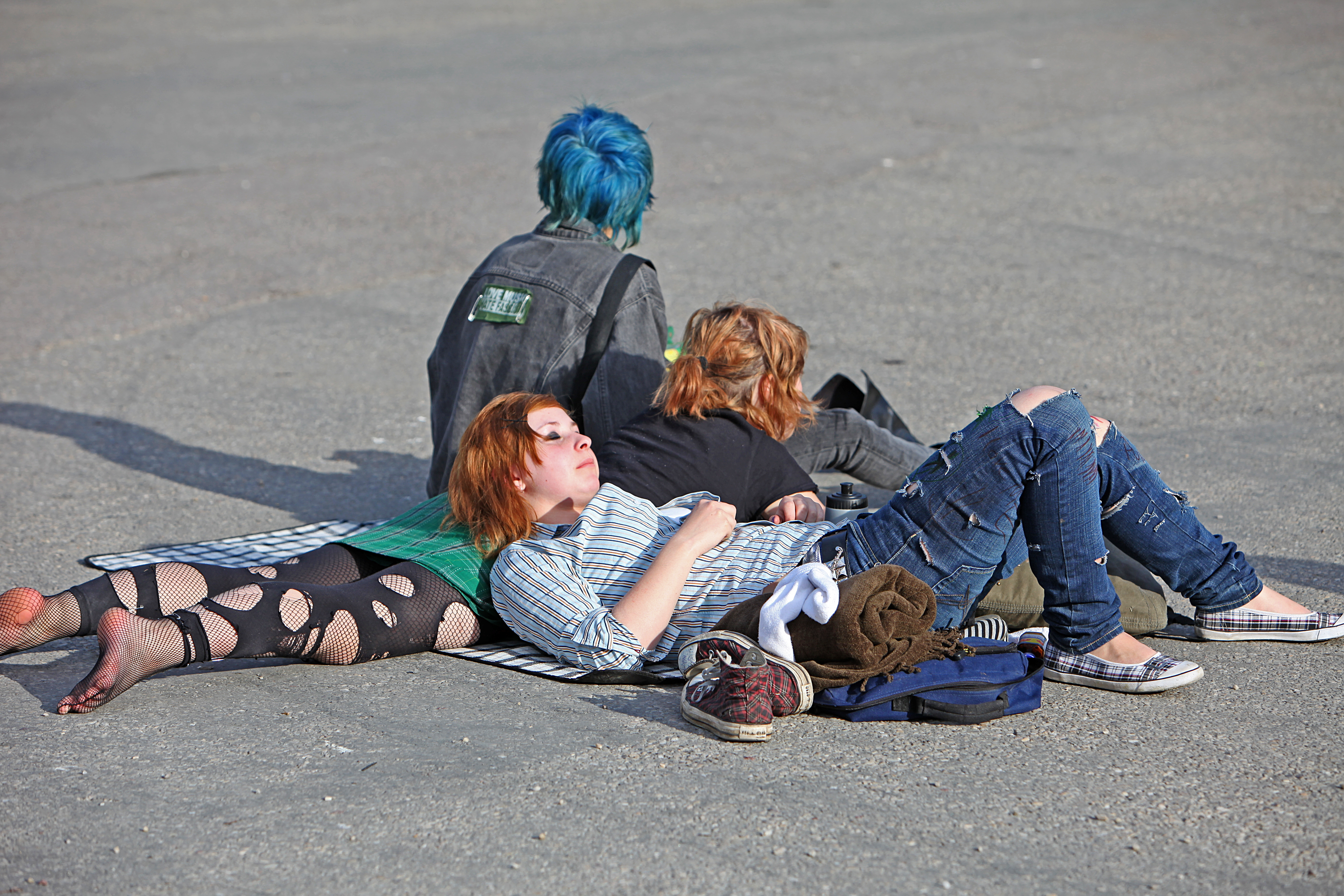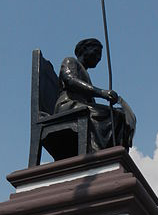|
Negrense
The Negrenses (; ) are the native cultural group of the Philippine provinces of Negros Occidental, Negros Oriental and Siquijor. Overview Negrense ( English: ''Negrese''; Hiligaynon and Cebuano: ''Negrosanon'' or ''Buglasnon'') identity is closely intertwined with the history and culture of Negros and Siquijor, the latter which had been part of Negros Oriental until 1971. This identity first emerged in the 19th century when Spanish-speaking migrant landowners—mostly but not exclusively from Panay, Cebú and Bohol—and their families started to develop and strengthen an independent, common identity tied neither to ethnicity nor language but rather to the land.Rodríguez, C. A. (1988). Economic transformation of Negros Oriental ''Philippine Studie ... [...More Info...] [...Related Items...] OR: [Wikipedia] [Google] [Baidu] |
Negros Occidental
Negros Occidental ( hil, Nakatungdang Negros; tl, Kanlurang Negros), officially the Province of Negros Occidental, is a Provinces of the Philippines, province in the Philippines located in the Western Visayas Regions of the Philippines, region. Its capital is the city of Bacolod. It occupies the northwestern half of the large island of Negros (Philippines), Negros, and borders Negros Oriental, which comprises the southeastern half. Known as the "Sugarbowl of the Philippines", Negros Occidental produces more than half the nation's sugar output. Negros Occidental faces the island-province of Guimaras and the province of Iloilo on Panay Island to the northwest across the Panay Gulf and the Guimaras Strait. The primary spoken language is Hiligaynon language, Hiligaynon and the predominant religious denomination is Roman Catholicism. Bacolod is the capital, seat of government and the most populous city of the province, but is governed independently as a highly urbanized city. With a ... [...More Info...] [...Related Items...] OR: [Wikipedia] [Google] [Baidu] |
Negros (island)
Negros is the fourth largest and third most populous island in the Philippines, with a total land area of . Negros is one of the many islands of the Visayas, in the central part of the country. The predominant inhabitants of the island region are mainly called '' Negrenses'' (locally ''Negrosanons''). As of 2020 census, the total population of Negros is 4,656,945 people. From May 29, 2015 to August 9, 2017, the whole island was governed as an administrative region officially named the Negros Island Region, which comprised the highly urbanized city of Bacolod and the provinces of Negros Occidental and Negros Oriental, along with its corresponding outlying islands and islets within a total regional area of . It was created on May 29, 2015 by virtue of ''Executive Order No. 183'' issued by Benigno Aquino III, who was the president at that time. On August 9, 2017, President Rodrigo Duterte signed the Executive Order No. 38 dissolving the Negros Island Region. History Precolo ... [...More Info...] [...Related Items...] OR: [Wikipedia] [Google] [Baidu] |
Negros Oriental
Negros Oriental ( ceb, Sidlakang Negros; tl, Silangang Negros), officially the Province of Negros Oriental, is a province in the Philippines located in the Central Visayas region. Its capital is the city of Dumaguete. It occupies the southeastern half of the large island of Negros, and borders Negros Occidental, which comprises the northwestern half. It also includes Apo Island, a popular dive site for both local and foreign tourists. Negros Oriental faces Cebu to the east across the Tañon Strait and Siquijor to the south-east (which happened to be part of the province before). The primary spoken language is Cebuano and the predominant religious denomination is Roman Catholicism. Dumaguete City is the capital, seat of government and most populous city of the province. With a population of 1,432,990 inhabitants, it is the second most-populous province in Central Visayas after Cebu, the fifth most-populous province in the Visayas and the 19th most-populous province ... [...More Info...] [...Related Items...] OR: [Wikipedia] [Google] [Baidu] |
Hiligaynon Language
Hiligaynon, also often referred to as Ilonggo or Binisaya/Bisaya nga Hiniligaynon/Inilonggo, is an Austronesian regional language spoken in the Philippines by about 9.1 million people, predominantly in Western Visayas and Soccsksargen, most of whom belong to the Hiligaynon people. It is the second-most widely spoken language in the Visayas and belongs to the Bisayan languages, and is more distantly related to other Philippine languages. It also has one of the largest native language-speaking populations of the Philippines, despite it not being taught and studied formally in schools and universities until 2012. Hiligaynon is given the ISO 639-2 three-letter code hil, but has no ISO 639-1 two-letter code. Hiligaynon is mainly concentrated in the regions of Western Visayas ( Iloilo, Capiz, Guimaras, and Negros Occidental), as well as in South Cotabato, Sultan Kudarat, and North Cotabato in Soccsksargen. It is also spoken in other neighboring provinces, such as An ... [...More Info...] [...Related Items...] OR: [Wikipedia] [Google] [Baidu] |
Karolanos Language
Karolanos, also known as Carolan (''Karul·an'')Gonzaga, V. L. (1988)The roots of agrarian unrest on Negros, 1850–90 ''Philippine Studies, 36''(2), 151–165. or Northern Binukidnon, is a Bisayan language spoken in Kabankalan, Negros Occidental by the Negrense The Negrenses (; ) are the native cultural group of the Philippine provinces of Negros Occidental, Negros Oriental and Siquijor. Overview Negrense ( English: ''Negrese''; Hiligaynon and Cebuano: ''Negrosanon'' or ''Buglasnon'') identity is clo ... descendants of the indigenous Carolan people. References Central Philippine languages Languages of Negros Occidental {{CPhilippine-lang-stub ... [...More Info...] [...Related Items...] OR: [Wikipedia] [Google] [Baidu] |
Cebuano Language
Cebuano (Cebuano on Merriam-Webster.com ), natively called by its generic term Bisaya or Binisaya (both translated into English as ''Visayan'', though this should not be confused with other Bisayan languages) and sometimes referred to in English sources as Cebuan ( ), is an Austronesian language spoken in the southern Philippines. It is spoken by the Visayan ethnolinguistic groups native to the islands of [...More Info...] [...Related Items...] OR: [Wikipedia] [Google] [Baidu] |
Magahat Language
Magahat, also called Southern Binukidnon or Buglas Bukidnon, is a Central Philippine language of the mountains of Negros in the Philippines that has been strongly influenced by Cebuano and Hiligaynon. It is similar to Karolanos; Lobel (2013) suggests that it is a Bisayan language. Demographics Oracion (1974) reported a Magahat population of just under 400 people in Basay, Negros Oriental. Dantes (2015)Dantes, Edmundo. 2015Anthropology Development in Negros Oriental reported a Magahat population of 2,478 individuals. According to the '' Ethnologue'', Magahat is spoken in the Mount Arniyo area near Bayawan, upper Tayaban, Tanjay, Santa Catalina, and Siaton municipalities in southern Negros Oriental Province, located just west of Dumaguete City. Sound changes Lobel (2013: 39, 249, 273)Lobel, Jason William. 2013''Philippine and North Bornean languages: issues in description, subgrouping, and reconstruction'' Ph.D. dissertation. Manoa: University of Hawai'i at Manoa. reports ... [...More Info...] [...Related Items...] OR: [Wikipedia] [Google] [Baidu] |
Provinces Of The Philippines
In the Philippines, provinces ( fil, lalawigan) are one of its primary political and administrative divisions. There are 82 provinces at present, which are further subdivided into component cities and municipalities. The local government units in the National Capital Region, as well as independent cities, are independent of any provincial government. Each province is governed by an elected legislature called the Sangguniang Panlalawigan and an elected governor. The provinces are grouped into seventeen regions based on geographical, cultural, and ethnological characteristics. Thirteen of these regions are numerically designated from north to south, while the National Capital Region, the Cordillera Administrative Region, the Southwestern Tagalog Region, and the Bangsamoro, Bangsamoro Autonomous Region in Muslim Mindanao are only designated by acronyms. Each province is a member of the League of Provinces of the Philippines, an organization which aims to address issues a ... [...More Info...] [...Related Items...] OR: [Wikipedia] [Google] [Baidu] |
Cultural Identity
Cultural identity is a part of a person's identity, or their self-conception and self-perception, and is related to nationality, ethnicity, religion, social class, generation, locality or any kind of social group that has its own distinct culture. In this way, cultural identity is both characteristic of the individual but also of the culturally identical group of members sharing the same cultural identity or upbringing. Cultural identity is a fluid process that is changed by different social, cultural, and historical experiences. Some people undergo more cultural identity changes as opposed to others, those who change less often have a clear cultural identity. This means that they have a dynamic yet stable integration of their culture. There are three pieces that make up a persons cultural identity, these are cultural knowledge, category label, and social connections. Cultural knowledge is when a person connects to their identity through understanding their culture's core ch ... [...More Info...] [...Related Items...] OR: [Wikipedia] [Google] [Baidu] |
English Language In The Philippines
Philippine English (similar and related to American English) is any variety of English native to the Philippines, including those used by the media and the vast majority of educated Filipinos and English learners in the Philippines from adjacent Asian countries. English is taught in schools as one of the two official languages of the country, the other being Filipino (Tagalog). Due to the influx of Filipino English teachers overseas, Philippine English is also becoming the prevalent variety of English being learned in the Far East as taught by Filipino teachers in various Asian countries such as Korea, Japan and Thailand, among others. Due to the highly multilingual nature of the Philippines, code-switching such as Taglish (Tagalog-infused English) and Bislish (English infused with any of the Bisayan languages) is prevalent across domains from casual settings to formal situations. History Filipinos were first introduced to English when the British invaded and occupied M ... [...More Info...] [...Related Items...] OR: [Wikipedia] [Google] [Baidu] |
Irreligion
Irreligion or nonreligion is the absence or rejection of religion, or indifference to it. Irreligion takes many forms, ranging from the casual and unaware to full-fledged philosophies such as atheism and agnosticism, secular humanism and antitheism. Social scientists tend to define irreligion as a purely naturalist worldview that excludes a belief in anything supernatural. The broadest and loosest definition, serving as an upper limit, is the lack of religious identification, though many non-identifiers express metaphysical and even religious beliefs. The narrowest and strictest is subscribing to positive atheism. According to the Pew Research Center's 2012 global study of 230 countries and territories, 16% of the world's population does not identify with any religion. The population of the religiously unaffiliated, sometimes referred to as "nones", has grown significantly in recent years. Measurement of irreligiosity requires great cultural sensitivity, especially outside ... [...More Info...] [...Related Items...] OR: [Wikipedia] [Google] [Baidu] |
Pampangan People
The Kapampangan people ( pam, Taung Kapampangan), Pampangueños or Pampangos, are the sixth largest ethnolinguistic group in the Philippines, numbering about 2,784,526 in 2010. They live mainly in the provinces of Pampanga, Bataan and Tarlac, as well as Bulacan, Nueva Ecija and Zambales. Overview The province of Pampanga is the traditional homeland of the Kapampangans. Once occupying a vast stretch of land that extended from Tondo to the rest of Central Luzon, huge chunks of territories were carved out of Pampanga so as to create the provinces of Bulacan, Bataan, Nueva Ecija, Aurora and Tarlac.Henson, Mariano A. 1965. ''The Province of Pampanga and Its Towns: A.D. 1300–1965''. 4th ed. revised. Angeles City: By the author. As a result, Kapampangans now populate a region that extends beyond the political boundaries of the small province of Pampanga. In the province of Tarlac, the indigenous population of Tarlac City and the municipalities of Bamban, Capas and Concepcion are ... [...More Info...] [...Related Items...] OR: [Wikipedia] [Google] [Baidu] |
.jpg)


